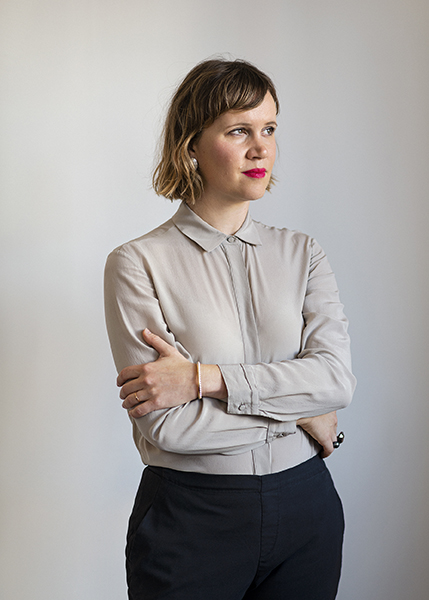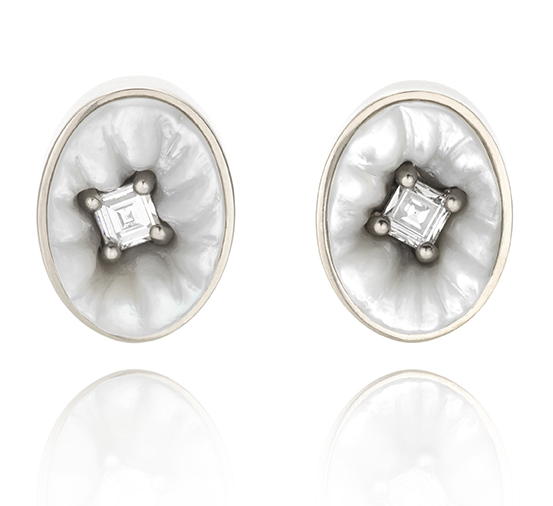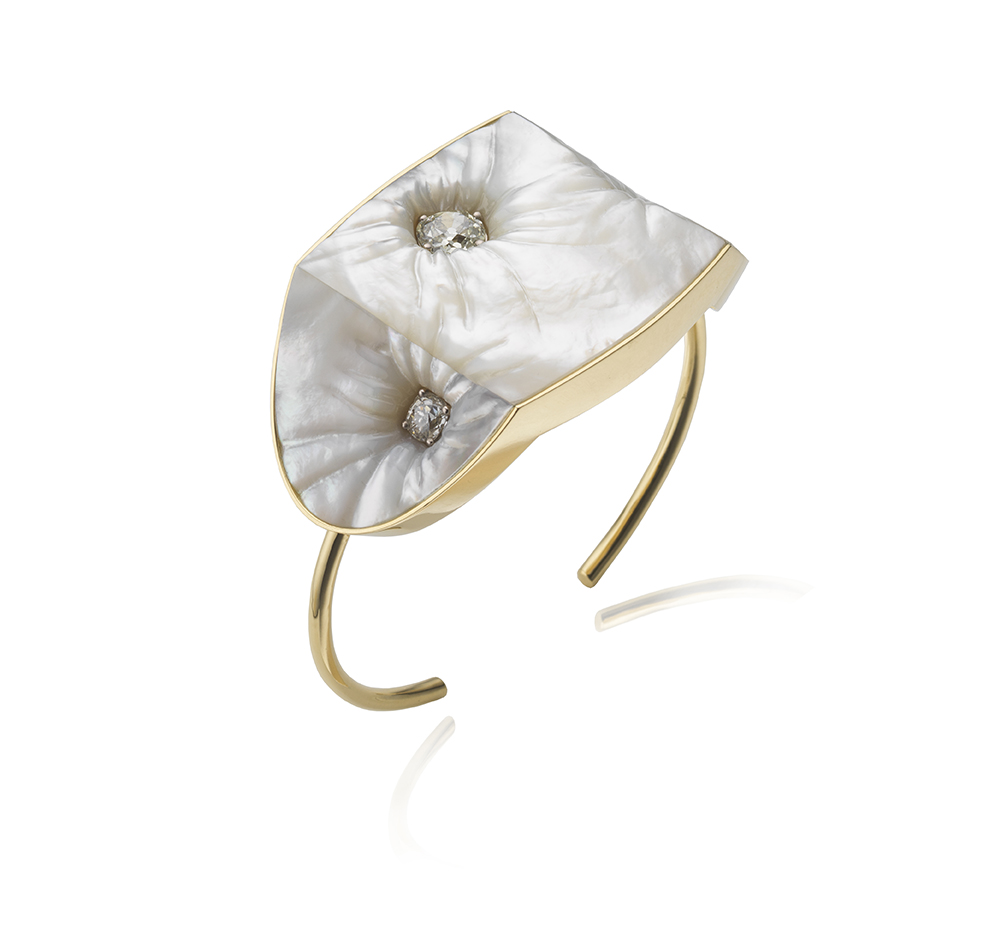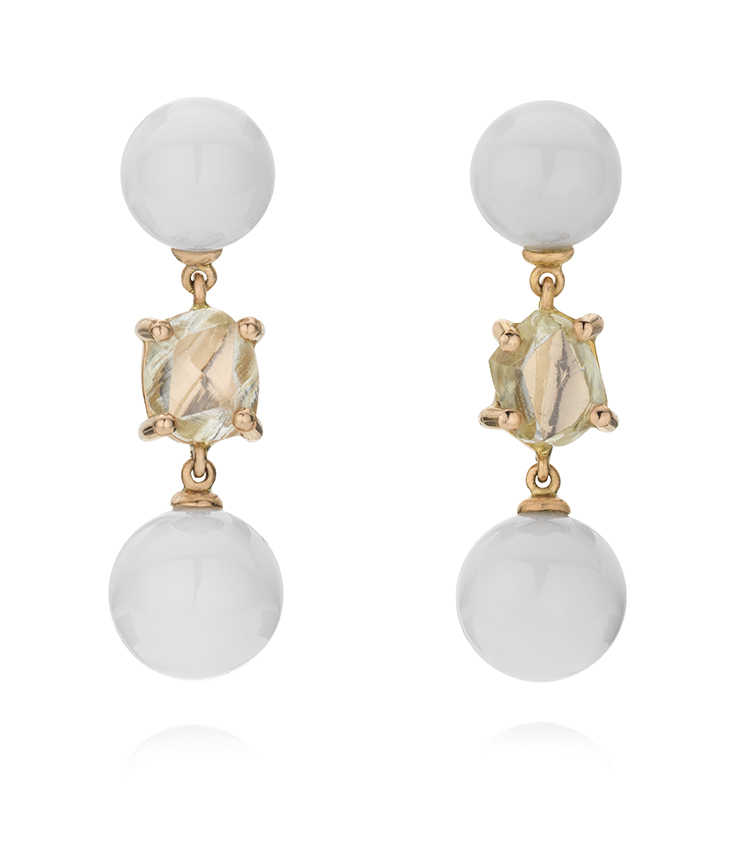The latest collection by Greek designer Melanie Georgacopoulos combining natural Hippopus pearls with recycled gold and unusual fancy-cut diamonds breaks rules of design!
A fearless approach to pearls – slicing, halving – and conjuring up unusual wearables has amassed Melanie Georgacopoulos a huge following. The designer started playing and experimenting with pearls at the Royal College of Art in London; after graduating, she worked as a freelancer for ace designer Antoine Sandoz, but kept making her own pieces during the weekends.
In 2010, Melanie’s collections were picked up by Dover Street Market (DSM); she then decided to start her own brand and wholesaling. “In 2012, Tasaki saw my pieces at DSM and invited me to Japan to meet with them. They offered to start a joint brand M/G TASAKI, which carries on to this day and is very successful in Asia,” she says.
Last year, the Greek designer celebrated the 10th anniversary of her brand with a special line – Carats. Throughout the lockdown, she has continued making jewellery but has consciously decided to make less but better pieces. “I have decided to go with the flow and not force situations, or stress suppliers and manufacturers; at times, there have been big delays in production and I have embraced that as part of the process,” adds the Hamburg-based jeweller.
For the one-off Carats pieces, she uses diamonds and natural pearls for the very first time. Unlike cultured pearls, both diamonds and natural pearls are measured in carat weight, hence the collection’s name. “It is also a cheeky nod to the jewellery industry, which often describes gemstones only by their carat weight as if it is the most important feature,” Melanie points out. Earrings, bangles and rings feature different styles of diamonds in multiple shapes, cuts, colours, settings and sizes. This, she explains is an ongoing body of work, featuring one-of-a-kind jewels that complement one another.
With her Carats collection, Melanie pays homage to her breakthrough design of slicing pearls over ten years ago that became her signature.
Has the pandemic and lockdown impacted you as a designer and perhaps, shaped the Carats collection?
Yes, absolutely. Sometimes, when you are going through something you need to let the dust settle first in order to see what has changed. I feel that turning 40 last year has also impacted me, I have become more confident as a designer – and I enjoy taking more risks. For the Carats collection, I can already see that I felt free to design one-off pieces that create a narrative together rather than take one idea and break it into 20 to 30 pieces as I used to. I can also see that the embedded technique very much showed how I have felt all this time, as if someone is pressing me into a situation that I am unsure about, but in the end everything would be ok. All the embedded pieces are irregular, as I wanted to highlight the gesture of pressing in. I guess having less freedom physically over the last year has made me seek and embrace adventure and unpredictability in my own work.
You started working with freshwater pearls, and moved on to South Sea and Akoya. And in this collection, you have used Hippopus pearls from Indonesia. Walk us through your pearl exploration.
I started with freshwater because they offer the most variety in terms of colour and size, and are also the most affordable. I drilled them, faceted them, sanded them and graduated them; I’m always thinking of presenting new ideas to customers. In the last few years, I have also worked with South Sea pearls, Tahitians as well as Akoya for M/G TASAKI. As I continue to evolve as a designer, I want to learn and expand my knowledge on different kinds of pearls. Most people, I think, see pearls only as white and round, so it is important to highlight other kinds of pearls, shapes and colours.
I discovered the Hippopus pearls fairly recently, they are natural and I find them very subtle and elegant because they have those tiny flames. I wanted to use a special kind of pearl for the 10-year brand anniversary and I was lucky to meet a supplier of Hippopus pearls around the time I was considering different pearl options.
Two of the cuffs feature the thickest part of mother-of-pearl (MOP) with pearls and diamonds embedded in it. Do tell us more.
I had to source very thick MOP because we were going to carve it in order to make it look like someone pushed diamonds and pearls in. The MOP is 6mm deep and it is sourced from Australian South Sea pearl shells, which are the biggest ones. I knew that in order to do this embedded technique the right way, we had to use one single piece of MOP on each side of the bangle; so, I was very pleased when we managed to source it. I worked with a lapidary and we did a few trials before achieving the right effect!
Tell us about you love of old mine diamonds and the decision to use recycled gold in the collection.
We have used recycled gold in the entire collection, it makes sense to use recycled materials when we can and we will continue to do so from now on. I have actually used a variety of diamonds in the entire collection, old mine, brilliant, step cuts and roughs with a variety of setting techniques. Because this is really my first collection with so many diamonds, I wanted to explore the entire spectrum and understand what makes them so appealing. I must admit though that I am particularly drawn to old mine diamonds, I find their imperfection very endearing.







